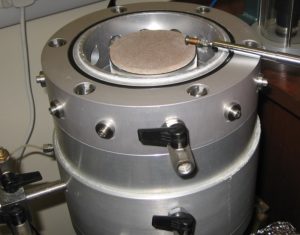Unsaturated soil testing
It is scientifically important to assess the influence of microstructure to obtain an understanding of the mechanics, behaviour, and strength and deformation properties of unsaturated expansive soils in situ. The influence of microstructure of natural soils, first recognized by Terzaghi 1941, has been studied systematically in the literature on saturated soils on the basis of the comparison of the response of natural soils in their intact and reconstituted state; formalized by Burland in 1990 and adopted by many researchers since then (e.g., Hight et al., 1992; Allman and Atkinson 1992; Burland et al., 1996; Cotecchia and Chandler 1997, 2000; Georgiannou and Burland 2001; Mitchell and Soga 2005; Gens 2011).
studied systematically in the literature on saturated soils on the basis of the comparison of the response of natural soils in their intact and reconstituted state; formalized by Burland in 1990 and adopted by many researchers since then (e.g., Hight et al., 1992; Allman and Atkinson 1992; Burland et al., 1996; Cotecchia and Chandler 1997, 2000; Georgiannou and Burland 2001; Mitchell and Soga 2005; Gens 2011).
On the other hand, existing knowledge on unsaturated soils, obtained over the last two decades, is almost exclusively based on experimental studies of soils reconstituted in the laboratory. The goal of this research is to assess and quantify the influence of the microstructure of naturally existing expansive unsaturated soils by establishing an experimental database on both natural and reconstituted expansive soils; the latter will then be used as a frame of reference for the response of the natural expansive soils to assess the influence of the microstructure on their hydromechanical behaviour i.e.(i) water retention and permeability characteristics and (ii) response to one-dimensional compression and triaxial shearing under suction control.
Funding: (NTUA’s Basic Research Framework Program, PEVE). 2022-2024
